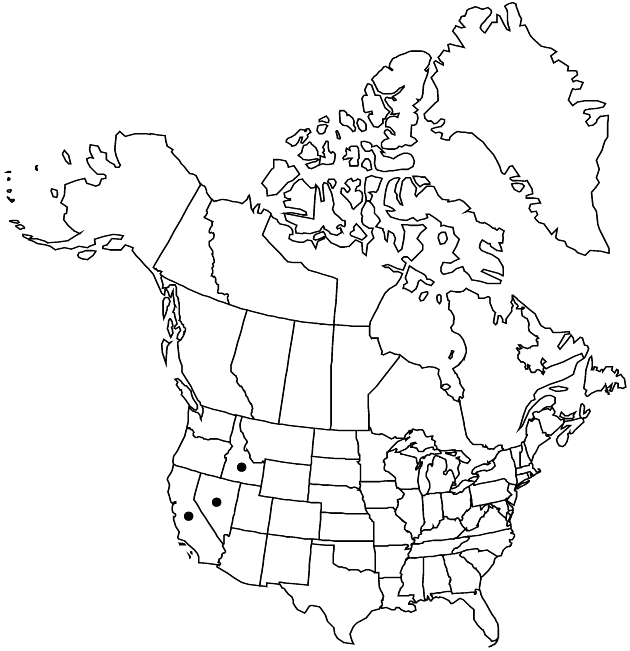Cirsium andersonii
Bot. Tiddsskr. 31: 68. 1911.
Perennials (but often appearing biennial), (15–) 40–70 (–100) cm; rootstocks producing erect, taprooted caudices and rosettes. Stems usually 1, erect, subglabrous to puberulent and/or tomentose; branches 0–several, stiffly ascending. Leaves: blades ± elliptic, 8–35 × 4–8 cm, divided about halfway to midveins, lobes spreading, triangular, coarsely dentate or with a few broad lobes, obtuse to acute, main spines 1–5 mm, abaxial faces green or gray, thinly tomentose, adaxial green and glabrous to sparingly pilose; basal often present at flowering, spiny winged-petiolate; main cauline reduced distally, bases clasping; distal much reduced, linear-oblong, usually less deeply lobed and often spinier than proximal. Heads 1–6, borne singly or in corymbiform, racemiform, or spiciform arrays. Peduncles 0–20 cm. Involucres broadly cylindric to narrowly campanulate, 3–5 × 2–4 cm, loosely arachnoid or ± glabrous, finely short-ciliate. Phyllaries in 6–8 series, imbricate, outer green, inner purple to red, linear-lanceolate (outer) to linear (inner), abaxial faces without glutinous ridge; outer and mid bodies short, appressed, entire or spinulose-ciliate, apices long-spreading to ascending, entire or spinulose-ciliate or rarely with expanded, fringed appendages, spines straight, weak, 1–3 mm; apices of inner red to purple, straight or rarely twisted, long, flat, entire. Corollas red to reddish purple, 30–45 mm, tubes 10–20 mm, throats 10–16 mm, lobes 9–11 mm; style tips 3.5–5 mm. Cypselae brown, 6–7 mm, apical collars narrow; pappi 25–40 mm. 2n = 32, 64.
Phenology: Flowering summer (Jul–Sep).
Habitat: Moist to dry soils, openings in montane woodlands, montaine coniferous forests, aspen groves
Elevation: 1100–2900 m
Distribution

Calif., Idaho, Nev.
Discussion
Cirsium andersonii grows in the Cascade Range of northern California south through the Sierra Nevada of eastern California and western Nevada. It has been reported from the mountains of southwestern Idaho, but I have not seen specimens from there.
Heads of Cirsium andersonii are actively visited by hummingbirds as well as a variety of insects (P. L. Barlow-Irick 2002).
Selected References
None.
Lower Taxa
"fine" is not a number."broad" is not a number.